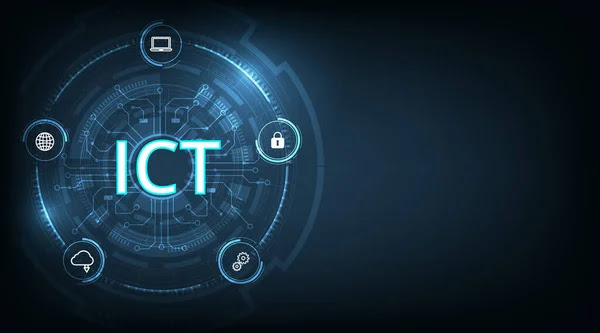Tech Solutions has been a driving force behind many groundbreaking innovations that have helped preserve the environment. From sophisticated algorithms and AI-driven solutions to advanced sensors and IoT devices, tech solutions have made a big impact on environmental preservation. These solutions are designed to optimize resource consumption, reduce waste, and minimize the carbon footprint of various industries.
For instance, smart homes and buildings are now equipped with sensors that can monitor energy usage and adjust heating, cooling, and lighting to minimize waste. Similarly, electric and hybrid vehicles have emerged as a new alternative to traditional gas-guzzling cars, reducing greenhouse gas emissions and improving air quality.
Technology has also helped improve waste management systems, with advanced recycling and composting solutions that can help reduce the amount of waste that ends up in landfills. Overall, tech solutions have played a critical role in promoting environmental sustainability and protecting our planet for future generations.
1. Batteries

Batteries are an essential component of our daily lives, powering everything from our smartphones to our electric cars. However, the production and disposal of batteries can have a significant impact on the environment. Fortunately, technology solutions are emerging that are making a big impact on environmental preservation.
One such solution is the development of rechargeable batteries, which reduce the need for disposable batteries and minimize waste. Additionally, advances in battery recycling technology are enabling the recovery of valuable materials from used batteries, reducing the need for new materials and minimizing the environmental impact of battery production.
As we continue to rely more heavily on batteries in our daily lives, these technological solutions will play an important role in preserving our environment for future generations.
2. Solar Glass

The use of solar glass-technology has been gaining momentum in recent years, and it’s not hard to see why. With the growing concern for the environment, many companies are now investing in green technologies to reduce their carbon footprint. Solar glass-technology is one such solution that is making a big impact on environmental preservation.
It is a cost-effective and sustainable way to harness solar energy, which can be used to power homes and businesses. This technology involves the use of special glass panels that are capable of converting sunlight into electricity.
Solar glass-technology can also be used to create shade, which can reduce the need for air conditioning, further reducing energy consumption. With the increasing awareness of the need for sustainable living, solar glass-technology is becoming an increasingly popular solution for those who want to reduce their impact on the environment.
3. Fake Meat

The rise of fake meat-tech solutions is making a big impact on environmental preservation. With growing concerns about climate change and animal welfare, many consumers are turning to plant-based alternatives to meat. These products not only offer a healthier and more ethical alternative to traditional meat but also have a significantly lower environmental impact.
Fake meat-tech solutions are using innovative technologies to create plant-based products that look, taste, and feel like real meat. These products are not only appealing to vegetarians and vegans but also to meat-eaters who are looking for healthier and more sustainable options.
With the increasing demand for plant-based meat alternatives, the fake meat-tech industry is rapidly growing, and it is expected to continue to do so in the future. By reducing the demand for animal-based products, these solutions are helping to reduce greenhouse gas emissions, conserve water and land resources, and promote sustainable food production practices.
4. Graphene

Graphene-tech solutions are playing a crucial role in preserving the environment. Graphene, a unique material made of carbon atoms arranged in a hexagonal lattice, is known for its exceptional properties such as high strength, flexibility, and conductivity.
With its incredible properties, graphene has become an ideal choice for developing innovative solutions to address environmental challenges. From energy storage to water filtration, air purification, and even plastic alternatives, graphene has the potential to revolutionize the way we approach environmental preservation.
For instance, graphene-based water filters can remove impurities and pollutants, providing clean and safe drinking water. Similarly, graphene-based batteries can store renewable energy and reduce our dependence on fossil fuels. With more research and development, graphene-tech solutions are expected to make an even bigger impact on environmental preservation in the years to come.
5. Environmental Sensors

Environmental sensors are revolutionary tech solutions that are making a big impact on environmental preservation. These sensors are designed to detect, monitor, and record environmental data such as air quality, water quality, soil quality, and temperature. They are equipped with advanced technologies such as IoT, AI, and machine learning to collect and analyze data in real-time.
The data collected by these sensors can provide valuable insights into the state of the environment and help in identifying potential hazards or areas that require immediate attention. With the help of environmental sensors, it is now possible to track pollution levels, prevent environmental disasters, and improve the overall health of our planet.
These sensors are being widely used in various industries such as agriculture, mining, transportation, and energy to ensure sustainable development and reduce the environmental impact of human activities. The use of environmental sensors is an excellent example of how technology can be leveraged for the greater good of our planet.
6. Plant-Based Plastic

Plant-based plastic technology is a rapidly evolving field that is having a significant impact on environmental preservation. These innovative solutions rely on biodegradable materials derived from plants instead of traditional petroleum-based plastics.
Not only do plant-based plastics have a smaller carbon footprint, but they can also be composted or recycled more easily, reducing waste and pollution. Innovative companies are leading the way in developing plant-based plastic alternatives for a wide range of applications, from packaging to consumer products.
As consumers become more environmentally conscious, the demand for plant-based plastic solutions is likely to continue to grow. By supporting these innovative technologies, we can help to create a more sustainable future for ourselves and future generations.
7. Artificial Intelligence

Artificial Intelligence (AI) is proving to be one of the most powerful tech solutions for environmental preservation. With its ability to process vast amounts of data, AI is being used to analyze everything from deforestation patterns to air pollution levels. This technology is also being used to help predict natural disasters and mitigate their impact.
For example, AI-powered early warning systems can help evacuate people from affected areas before a hurricane or flood strikes. In addition, AI is being used to optimize energy consumption, reduce waste, and increase recycling rates. These tech solutions are making a big impact on environmental preservation, and they have the potential to revolutionize the way we protect our planet for future generations.
8. Carbon Capture

Carbon capture technology is a significant step towards environmental preservation. It has become increasingly important in the fight against climate change. This technology aims to capture carbon dioxide emissions from industrial processes and store them permanently underground.
There are several methods of carbon capture technology, including post-combustion, pre-combustion, and oxy-fuel combustion. These methods have proven to be effective in reducing carbon emissions and mitigating climate change.
Carbon capture technology is becoming more advanced with new research and development. As a result, it is becoming more accessible and cost-effective for businesses to adopt. Overall, carbon capture technology is a promising solution for reducing carbon emissions and preserving the environment.
9. Nuclear Fusion

Nuclear fusion technology is making a significant impact on environmental preservation. The process involves merging atomic nuclei to create energy, which is a cleaner and more efficient source of power than traditional methods like coal and gas.
Unlike nuclear fission, which produces radioactive waste, nuclear fusion produces no harmful emissions or waste products. Furthermore, fusion reactions require only a small amount of fuel and produce vast amounts of energy, making it a highly sustainable and cost-effective solution.
As the world continues to face climate change and environmental degradation, nuclear fusion technology offers a promising path forward for a cleaner, greener future. With ongoing research and development, it has the potential to become a primary source of energy and help reduce our reliance on fossil fuels.
10. Smart Grids
Smart grids are revolutionizing the way we manage our energy resources, and they are proving to be a major player in the environmental preservation movement. With the help of advanced technology, smart grids can optimize energy usage, reduce waste, and promote the use of renewable energy sources.
These grids are designed to be more efficient and reliable than traditional power grids, and they can even help prevent power outages by predicting and responding to grid disturbances in real-time. By adopting smart grid technology, we can reduce our carbon footprint, save money on energy bills, and create a more sustainable future for our planet.
As the demand for energy continues to grow, it is becoming increasingly important to embrace innovative solutions like smart grids to ensure a bright future for generations to come.
Conclusion
In conclusion, it is evident that technology solutions have a significant impact on environmental preservation. With the rise of innovative technologies, it is now possible to reduce carbon footprint and promote sustainable living. The use of renewable energy sources such as wind and solar power has become increasingly popular, and this has led to a significant reduction in greenhouse gas emissions.
Additionally, the development of smart homes and buildings has enabled the efficient use of energy and resources, leading to reduced wastage. Furthermore, the use of digital solutions such as blockchain technology and IoT devices have made it easier to track and monitor environmental impacts, making it easier for businesses and individuals to make informed decisions that promote sustainability.
Overall, it is clear that technology solutions have immense potential in promoting environmental preservation, and it is essential to continue investing in such solutions for a sustainable future.


